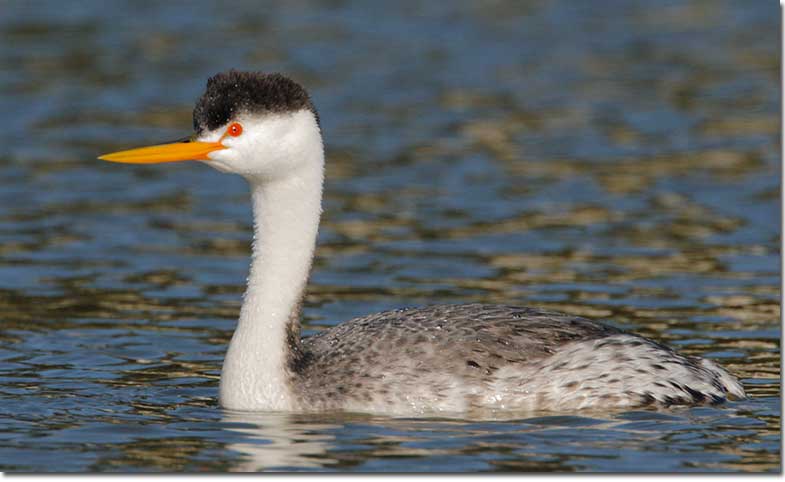Formerly considered to be the same species as the Western Grebe, the Clark’s Grebe attained full species status based on mating preferences and genetic studies. One behavioral difference between the two species is a tendency for Clark’s Grebes to more often spring forward during a dive.
Differences in bill color as well as one seemingly minor difference in call likely contribute to Clark’s Grebes being able to recognize one another and avoid Western Grebes while courting, even though the courtship displays of the two species appear to be identical.
A large, long-necked grebe with a long, pointed bill. The Clark’s Grebe is boldly patterned in black and white, with a black back, hind neck, and crown, and white underparts. The black on the head does not encircle the red eye, and its bill is orange-yellow. White secondaries.
Description of the Clark’s Grebe
BREEDING MALE
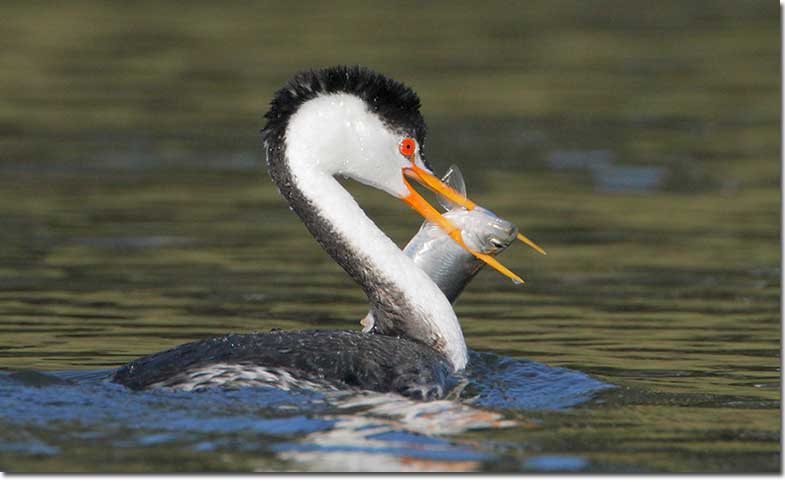
Winter adults have black nearing the eye, while summer adults have a white line above the eye. Long, thin bill has is orange. Photograph © Tom Grey.
A large, long-necked grebe with a long, pointed bill. The Clark’s Grebe is boldly patterned in black and white, with a black back, hind neck, and crown, and white underparts. The black on the head does not encircle the red eye, and its bill is orange-yellow. White secondaries. Length: 25 in. Wingspan: 29 in.
See image at bottom of page for comparison of Clark’s and Western Grebes.
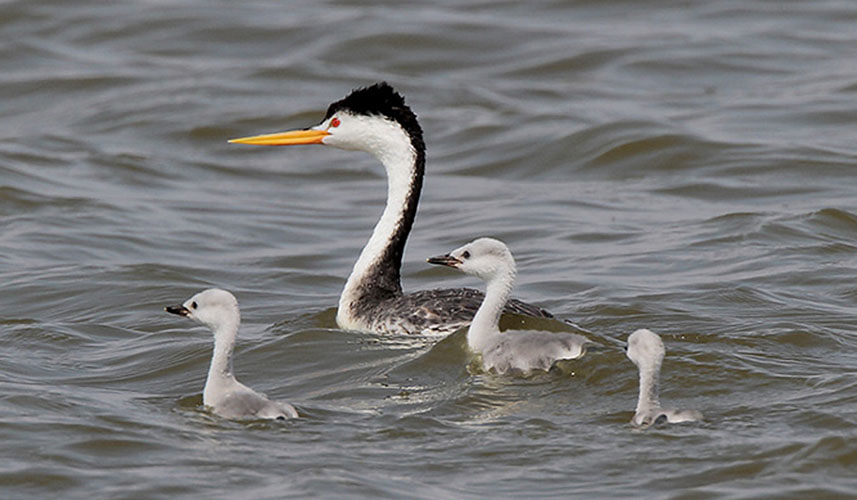
Photograph © Greg Lavaty.
Female
Sexes similar.
Seasonal change in appearance
Winter adults have black nearing the eye, while summer adults have a white line above the eye.
Juvenile
Juveniles are mostly white, and immatures are similar to adults.
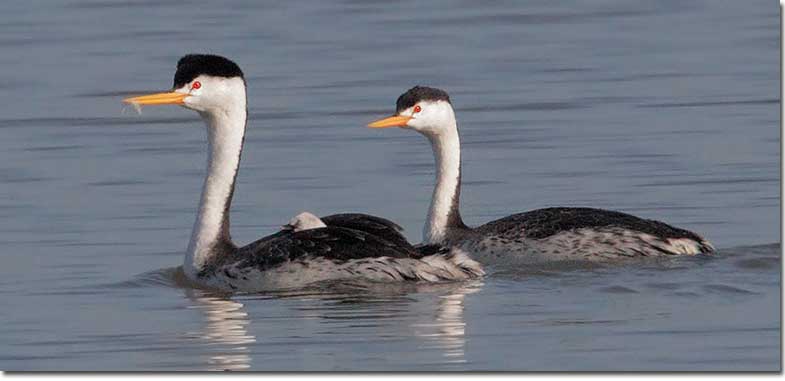
Young riding the back of the adult. Photograph © Tom Grey.
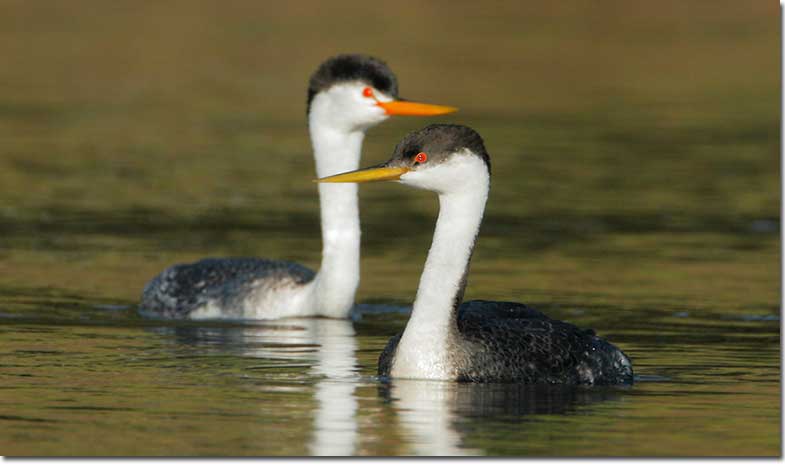
Clark’s Grebe, in the back, and the similar Western Grebe in the front. Notice the differences in bill color. The black cap extends below the eye on the Western Grebe. Photograph © Tom Grey.
Habitat
Lakes, marshes, and ocean bays.
Diet
Fish.
Behavior
Forages by diving underwater.
Range
Breeds widely in the western U.S. and winters along the Pacific Coast and southwestern U.S.
Wing Shape
The shape of a bird’s wing is often an indication of its habits and behavior. Fast flying birds have long, pointed wings. Soaring birds have long, broad wings. Different songbirds will have a slightly different wing shape. Some species look so much alike (Empidonax flycatchers) that scientists sometimes use the length of specific feathers to confirm a species’ identification.
Wing images from the University of Puget Sound, Slater Museum of Natural History
Fun Facts
Clark’s Grebes often use springing dives in which they spring forward as they enter their dive.
Clark’s and Western Grebe’s were once considered to be the same species.
Vocalizations
A two-syllable “kree-eek”call note is given.
Attracting
Not normally attracted by birders.
Clark’s and Western Grebes are very similar. Clark’s is the bird in the background.
Similar Species
Western Grebe
Western Grebes have greenish-yellow bills and the black on their head often encloses the eyes. Both species shown below.
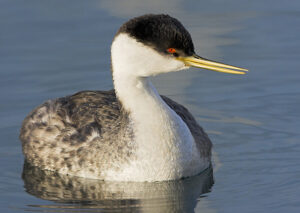
Western Grebe
Common Loon
Might be confused with one of the loon species (in non-breeding plumage) by inexperienced birders. Loons are larger with heavy bodies and heavier bills.

Common Loon in winter plumage
Nesting
The nest is a floating mass of plant material anchored to emergent plants.
Number: 2-4.
Color: Bluish-white.
Incubation and fledging:
– Young hatch at 24 days.
– Young fledge (leave the nest) in minutes after hatching by climbing on to the back of a parent and remain with the adults for some time.

